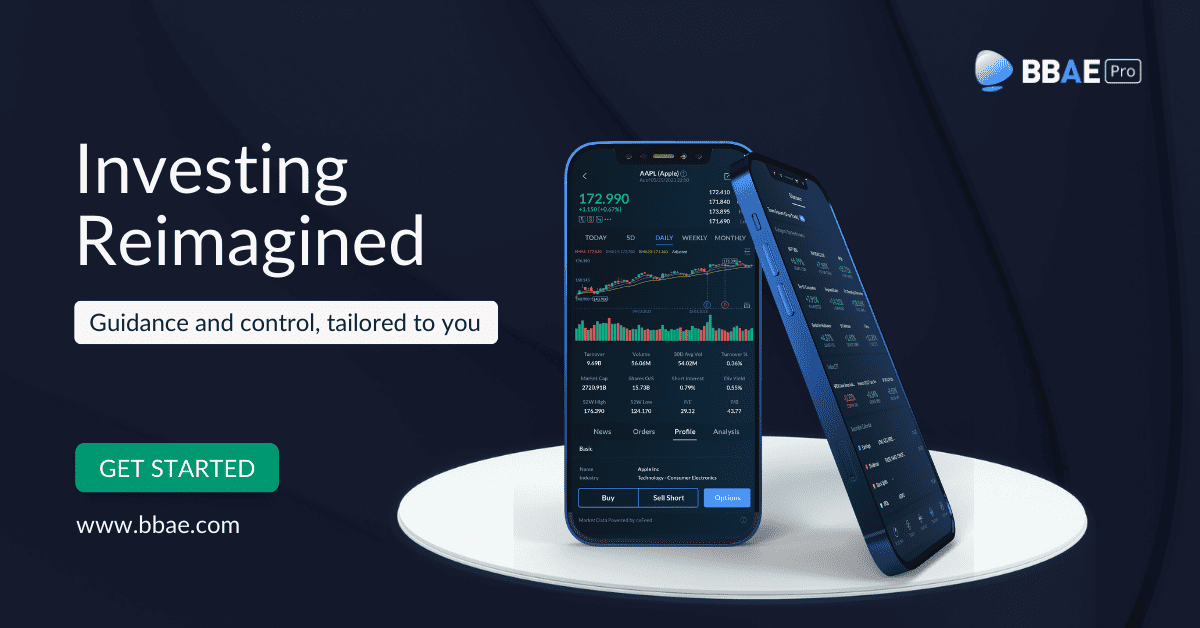Options Strategies Simply Explained
We covered the basics of options in a recent article. I mentioned that a key feature of options – in fact, their raison d’etre – is they allow performance and payoff profiles that you can’t get from just buying or short selling individual stocks.
The moral of that article was to make sure you have a strong understanding of that individual stock and conviction about its potential movements first, and then figure out how to capitalize on your beliefs with options.
I talked about how buying calls could offer literally dozens of times more upside than just buying the underlying stock in a good-case scenario, yet also offer a complete loss if the stock moves in the wrong direction. On the opposite end of the safety spectrum, buying protective puts on a stock you hold creates a collective investment position that’s massively safer than just holding the stock. (If your stock is $100 and you buy puts to sell it at, say, $85, if the stock plunges to $40 or $20 or even $0, you’re only poorer by 15% plus the cost of the put and the transaction.)
But options can be used to exploit beliefs (or worries) about stocks aside from just “way up” and “way down.” These more nuanced beliefs could include: range-bound/dead-money, flat-to-slightly-up, flat-to-slightly-down, and even “either way up or way down; just not sure which.”
Options proponents might say that options knowledge is the investing equivalent of having a large vocabulary: you have many more tools to express your beliefs about what a stock might do.
Options detractors might say that’s theoretically or mechanically true, but pragmatically speaking, it’s very hard to accurately predict nuanced stock price movement in the year-or-less timeframe most options contracts tend to fall within.
Let’s sidestep this debate for now and start with the basics of multi-option strategies.
How to use options based on your belief about the stock price
Flouting common practice, I’m starting with your (hypothetical) view of the stock price trajectory rather than with trade mechanics, because your belief is what should come first in setting up an options trade. Again, just because you can trade on a particular belief does not mean it’s wise or realistic to trade on that belief, and even if your belief is right, if everyone else also has that same belief, the trade’s profitability will be reduced.
As with stocks, prevailing market beliefs get largely priced into options. Contrarian beliefs that you’ve got high convictions about – and, most importantly, you end up being right about – will provide bigger payoffs. But, of course, those are harder to come by.
Your view: Extremely bullish
Your trade: Buy a call. We covered this in the prior article. If XYZ Corp trades for $100 and rises to $120, that’s a 20% gain for the underlying stock, but – and these are hypothetical numbers – for something like $6 or $8 or $9 or whatever, an investor might be able to buy a call whose value might rise 500% or more with that same stock price movement. The downside is that if the stock doesn’t rise enough to give your calls exercisable value, you lose everything you paid for the call.
Your view: Extremely bearish
Your trade: Buy a put. Puts are the right to force someone to buy a stock at a set “strike” price. This right becomes more valuable the further a stock drops. For example, if XYZ drops from $100 to, say, $22, the right to sell XYZ for, say, $85 would be very attractive to most shareholders.
You may already be a shareholder when you buy the put – in which case it’s considered a “married” or “protective” put.
Your view: Ennui (stagnant stock price or dead money)
Your trade (one possibility): Write a call. Writing calls is considered one of the safest options trades if you already own the underlying stock, and one of the riskiest trades if you don’t (in fact, writing “naked” calls is so risky that you’ll need high-level permissions from your broker). If you own the stock, you presumably don’t feel “extremely bearish” about it, but if you’re feeling slightly “blah” yet not bearish enough to sell the stock, you could make some cash by selling/writing covered calls to a more bullish investor.
Your trade (a second possibility): Put on a collar. Now we get spicy. Or almost spicy. A collar requires two options.
| Multi-option trades, in addition to being more complicated, usually require a one-time options approval from your broker commensurate with the level of risk of the trade; it may be necessary to build some experience with simpler options trades first (which is a good idea anyway). As well, remember that you’ll pay two transaction fees to set up the overall position. |
A collar is arguably the most straightforward of the multi-option trades: It’s usually set up to lock in – “collar” – gains in a stock an investor already holds.
Pretend you own XYZ. Pretend it rises from $100 to $200. You’re thrilled – and maybe a little nervous, too, about a decline. So you buy the right to “put” it to someone at $190.
But pretend you’re thrifty and hate eating into your profits to buy this “insurance.” You’d rather eat into potential upside because you feel XYZ has had more than a good run and isn’t likely to go up much more. So to roughly offset the put you bought, you sell – for the same expiration date – a call for a strike price that’s about as far away from the stock price on the upside.
Your collar trade, then, is to buy a put at $190 and sell a call at $210.
These legs probably won’t exactly offset each other monetarily, but they mostly should, at least if you’re keeping the spirit of the collar.
And when the collar expires, you can “roll” it forward if you like by creating new positions (if the stock price has moved, you would be said to be rolling your collar up or down).
Your trade (a third possibility): A calendar spread. A calendar spread also requires two options. It’s mostly a bet on the decay of options prices over time (all options lose value as expiry approaches; this is called theta decay, as you’ll recall if you read my first article), rather than a bet on stock price movement.
If you believe a stock is stuck in the doldrums, a calendar spread may be a way to make a modest profit off your belief with modest loss potential.
A calendar spread exploits the non-linearity of theta decay.
This sounds complicated, but it’s not. Options lose value as their expiration dates approach, but their rate of value loss increases as that date draws closer.
For analogy lovers, it’s a bit like melting snow: a deep snowpack self-insulates, but as the snow gets thinner and thinner – and as sidewalks and asphalt or trees become exposed and draw in solar heat – the snow melt increases parabolically.
Calendar spreads attempt to exploit a similar parabolic effect by selling a sooner-to-expire option and buying a longer-to-expire one.
Pretend you feel that XYZ is “dead money” at $100. You might sell a call option on XYZ with a strike price of $100 that expires in, say, two or three months. By itself, this is a naked call and fearsomely risky. But you simultaneously buy a call option to buy XYZ at $100 that expires in four months.
Pretend you sold the nearer-term call for $5 and you bought the longer-term call for $8. Your net outlay is $3, and that (plus transaction costs) is your risk on this calendar spread (sometimes called a “horizontal” spread because it’s time-based).
In your dream scenario, the call you sold goes on to experience massive theta decay, whereas the call you bought only experiences it minimally. Even better, implied volatility spikes while your spread is on, sending the value of your “long” call up (it would also boost the value of the “short” call you wrote, but by a much lesser degree because expiry is closer). So if the near-term call drops to, say, $1 and the long-term call drops to $5.50, you might close out the trade with $1.50 in profit.
Your view: Stock price will move massively up or massively down, but you’re not sure which way
Your trade: A strangle or a straddle. Straddles and strangles have cute names and an intellectually interesting concept: betting on the magnitude of a stock’s movement while explicitly not betting on the direction. Picture a biotech company whose upcoming Phase III clinical trial results will either make or break the business. Or even a highly watched upstart tech company with a big earnings release coming. (Again, trading on obvious volatility that everyone can see coming is less likely to make you a fortune than trading on unexpected volatility – volatility you see coming, but which the market doesn’t.)
Straddles and strangles are debit spreads, meaning that you pay for both legs (as opposed to a collar, in which you pay for one leg and get paid for another). They basically differ in degree.
For a straddle, you simultaneously buy a put and a call for a strike price that’s as close to the current stock price as you can get. Ironically, your point of maximum loss is the current stock price. That’s because both options would expire worthless. (If XYZ is at $100, an option to buy (or to force someone to buy) XYZ for $100 is not yet attractive to use for transaction cost and premium cost reasons.)
Instead, you want fireworks in either direction. For example, if the stock goes up, your put option will expire worthless. But you’re hoping your call goes up more than enough in value to cover the cost of the put. And vice versa.
You’re exploiting the asymmetrical payoff nature of being long an option: downside is limited to the premium paid, whereas upside is theoretically (if never practically) infinite.
A strangle is a poor man’s straddle. Rather than buying expensive “at the money” (i.e., strike price near the stock price) options, a strangle mimics the idea of a straddle but buys calls and puts a little bit “out of the money.” There’s no requisite degree of out-of-the-money-ness, but if XYZ is at $100, a strangle might entail buying calls with a $105 strike and puts with a $95 strike.
Out-of-the-money options are a lot cheaper, so strangles cost less than straddles. But whereas the stock price at trade initiation is your point of maximum loss for a straddle, strangles have a zone of maximum loss – roughly in between the put and call strike prices, which would be between $95 and $105 in this example (I’m simplifying slightly by leaving off transaction costs). If you put on a strangle, you’d better hope the stock price really moves, in other words.
Your view: Stock price will go up a little, but not a lot
Your trade: Bull call spread. If a strangle is a poor man’s straddle, a bull call spread is the poor man’s call. It’s a cheaper, more muted version of a simple long call trade for an investor willing to give up potential upside to save a little money. This is a price-based or “vertical” spread.
The trade begins conceptually with buying a call, generally at some strike price above the current stock price.
But to partially offset the price of the call, the investor also sells a call at a higher strike price, yet for the same expiration date.
So if XYZ is at $100, you might buy a $105 strike price call for $2, and then you might sell a $110 strike price call for something like $0.80 (again, all price relationships in this piece are hypothetical; real options prices vary wildly by stock, duration of option, and other factors as discussed in the previous article).
Had you bought the call only, you’d be out $2. With the spread, you’re only out $1.20 – but, at least for the duration of the option, you’ve forfeited the upside above $110 (ignoring transaction costs) in exchange.
Your view: Stock price will go down a little, but not a lot
Your trade: Bear put spread. Invert the bull call spread logic: Picture a fear-of-commitment investor who wants to buy a put because he or she believes a stock’s price will drop, but who doesn’t want to go “all the way” with a pure long put.
And, of course, it’s not necessarily fear of commitment that motivates vertical spreads (though it could be): they’re generally the best options trade for exploiting beliefs about range-bound stock movements up or down. No need to pay for a full call or put if you don’t expect to need the extreme end of their payoff diagrams.
In a bear put spread, an investor buys one put – typically a bit below the stock price – while simultaneously selling another that’s still further below it. Same expiration date for both. (I’m using “one put” for simplicity, but options contracts trade in lots of 100.)
So if you’re moderately bearish on XYZ, which is at $100 now, you might buy a $95 put while selling $90 or $85 puts. They’ll be a lot cheaper, so it’s still a net debit trade (you pay more than you take in), but because of your beliefs, you’re happy to trade profit potential from a severe plunge – which you view as unlikely – for a cheaper net price for your put.
What else can you do with options?
A lot more, believe it or not. The basic spreads above are combinations of options, but you can combine spreads themselves to create even fancier trades with names like butterfly spread, iron butterfly, and iron condor.
And in the same way that a calendar spread is a play on theta decay (and perhaps a bump in implied volatility, which is technically a vega play, considering that vega denotes an option’s sensitivity to changes in implied volatility), other options strategies seek to exploit mispricings among the “greeks” I mentioned in the last piece. Gamma scalping is one example (gamma is how fast an option’s delta, or price sensitivity to the change in underlying stock price, changes).
If this sounds like a lot of fuss, it is. Complicated options strategies may feel brainy, but in my biased view, that doesn’t axiomatically make them any better than simple strategies, and in many cases, they’re probably worse for investors. Options enable you to bet on all sorts of movements and relationships and derivative relationships, but it’s hard enough to predict long-term stock movements, let alone second-order sensitivities to first-order sensitivities to near-term stock price movements.
BBAE has a great options tool
If you want to explore gamma scalping, you’re on your own, but BBAE has a multi-model theoretical options pricing tool that suggests – just suggests – potential fair value price estimates for options, and importantly, even compensates for low liquidity options. (If you poke around at options price chains, you’ll see that even for big stocks, options can be surprisingly thinly traded, which means that the last trade was some time ago, it might not be indicative of the current market price, and BBAE’s dxFeed tool solves for this). BBAE has what you need to get started with options, and in fact, to do all the trades featured in this article.
Just remember my #1 rule: decide which beliefs you’re willing to wager on first, and then decide your trade.
This article is for informational purposes only and is neither investment advice nor a solicitation to buy or sell securities. Options carry a high level of risk and are not suitable for all investors. Certain requirements must be met to trade options through BBAE. Please read the options disclosure document titled “Characteristics and Risks of Standardized Options.” Supporting documentation for any claims or statistical information is available upon request. Investing involves risks, including loss of principal. Hedging and protective strategies generally involve additional costs and do not assure a profit or guarantee against loss. Neither the author nor BBAE has a position in any investment mentioned.














